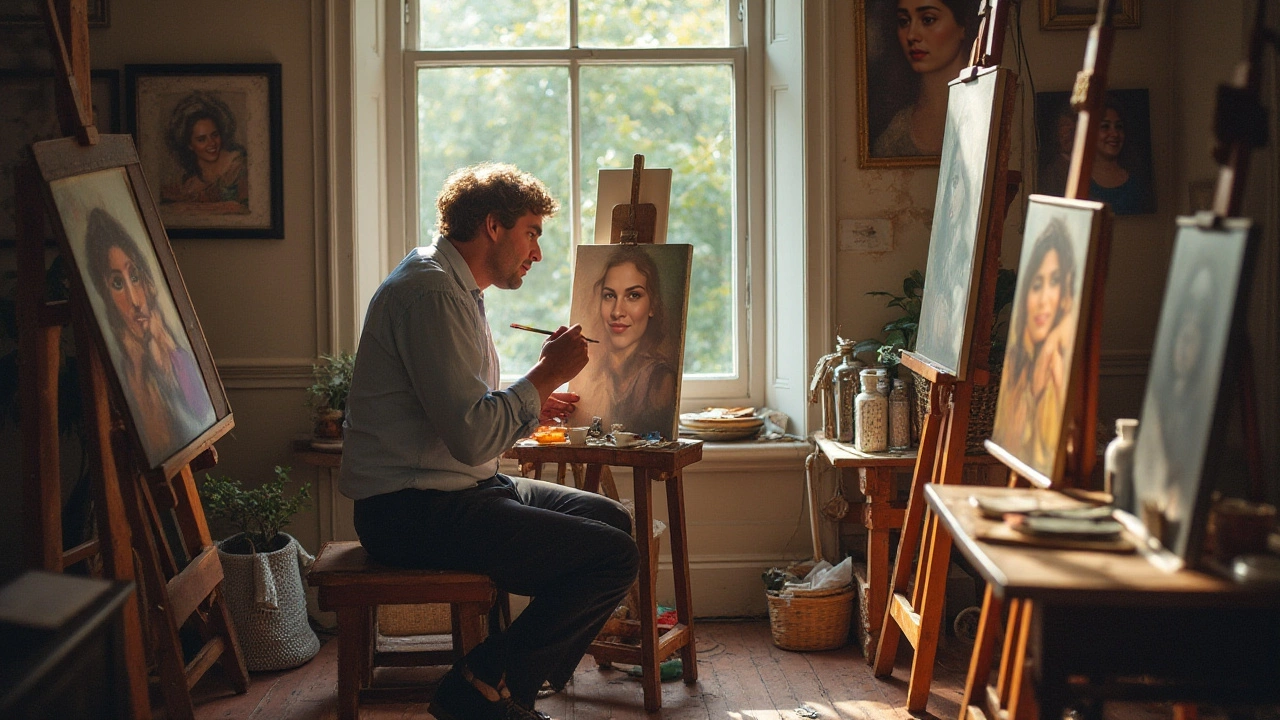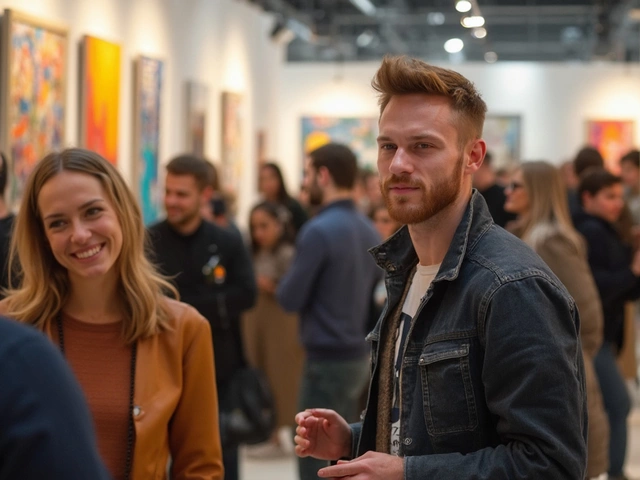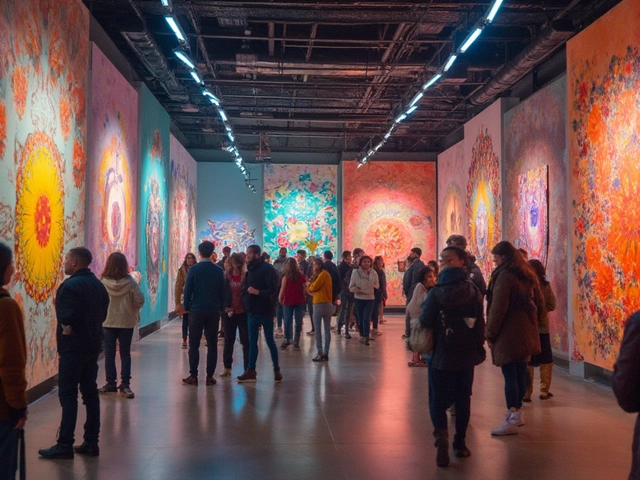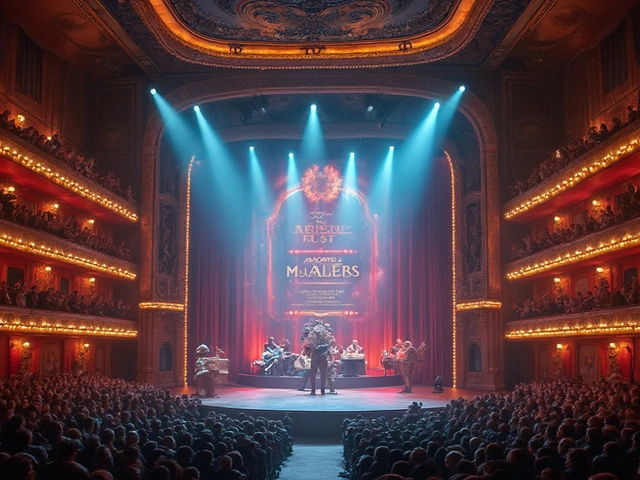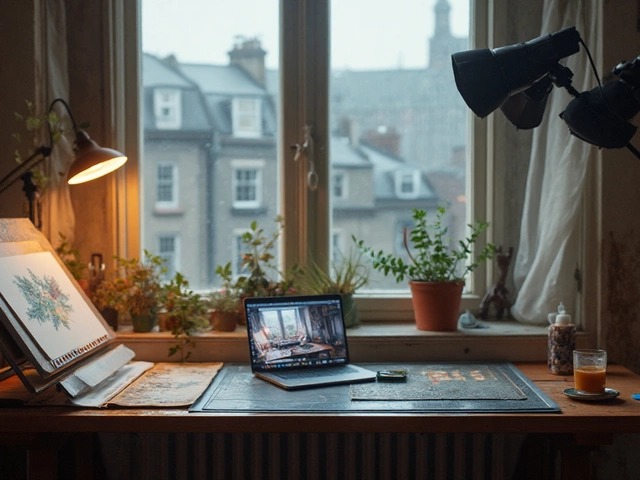Portrait paintings have captivated audiences for centuries, their allure lying in the harmonious merging of technical skill and expressive intent. In art galleries and private collections alike, these visual narratives draw us in, hinting at the complexities of human emotion through painted gazes and detailed settings.
Unpacking what constitutes a noteworthy portrait requires more than a cursory glance. It invites a deep dive into nuances that artists employ to reveal both their subjects and the art itself. This exploration will highlight how composition guides the viewer’s eye and how light and color can underscore or subvert the subject’s mood. By understanding these artistic strategies, we uncover the stories each portrait endeavors to tell.
- Understanding Composition and Balance
- The Role of Color and Lighting
- Expressing Emotion and Personality
- Recognizing Technical Skill and Style
Understanding Composition and Balance
When diving into the world of portrait painting, composition and balance serve as foundational pillars. Composition refers to how elements such as the subject, background, and other visual components are organized within the painting. Artists often employ techniques like the rule of thirds, golden ratio, or leading lines to guide the viewer’s gaze through the artwork with intention and ease. Balance, on the other hand, pertains to the visual weight distribution across the canvas, whether it leans toward symmetry or embraces asymmetry for dynamic tension.
A well-composed portrait doesn't just present the subject; it tells a story. The background might include significant objects or landscapes that provide context, all without overpowering the central figure’s prominence. Skilled artists like Rembrandt masterfully employed chiaroscuro, dramatically contrasting light and shadow, to create dimension and focus. This technique not only added depth to the painting but also highlighted the subject’s character and mood, effortlessly leading the audience’s attention to what truly matters.
The choices made in composition can evoke different emotions from the viewer. For instance, a centered portrait with balanced elements on either side can convey a sense of stability and calm. Alternatively, placing the subject off-center might introduce movement or tension, guiding the viewer to explore beyond the subject itself. Leonardo da Vinci’s "Mona Lisa" is a quintessential example, where the subtle backgrounds and pathways create a sense of tranquility swirling around the enigmatic figure. As Da Vinci might suggest, "Art is never finished, only abandoned," capturing the essence and infinite possibilities of composition.
"The composition in art is never accidental. It is a thoughtful placement of elements to convey meaning and emotion, harmonizing technique with vision." – Claude Monet
In examining balance, artists may use symmetrical compositions for their innate sense of harmony. Think of Jan van Eyck’s "Arnolfini Portrait," where balance plays through the mirrored objects on either side of the couple. However, many modern artists opt for asymmetry to create visual interest and movement. Engaging compositions often trick the eye to linger longer, inviting endless discoveries with each glance. This interplay between symmetry and imbalance opens the door to varied interpretations and connections.
To fully appreciate the intricacies of composition and balance within a painting, consider observing portraits across different eras and styles. From Renaissance masterpieces to contemporary expressions, each canvas unfolds a unique perspective shaped by strategic elements. Above all, let the enjoyment of unraveling character stories be your guide, enriching how you perceive and connect with the artistry before you.
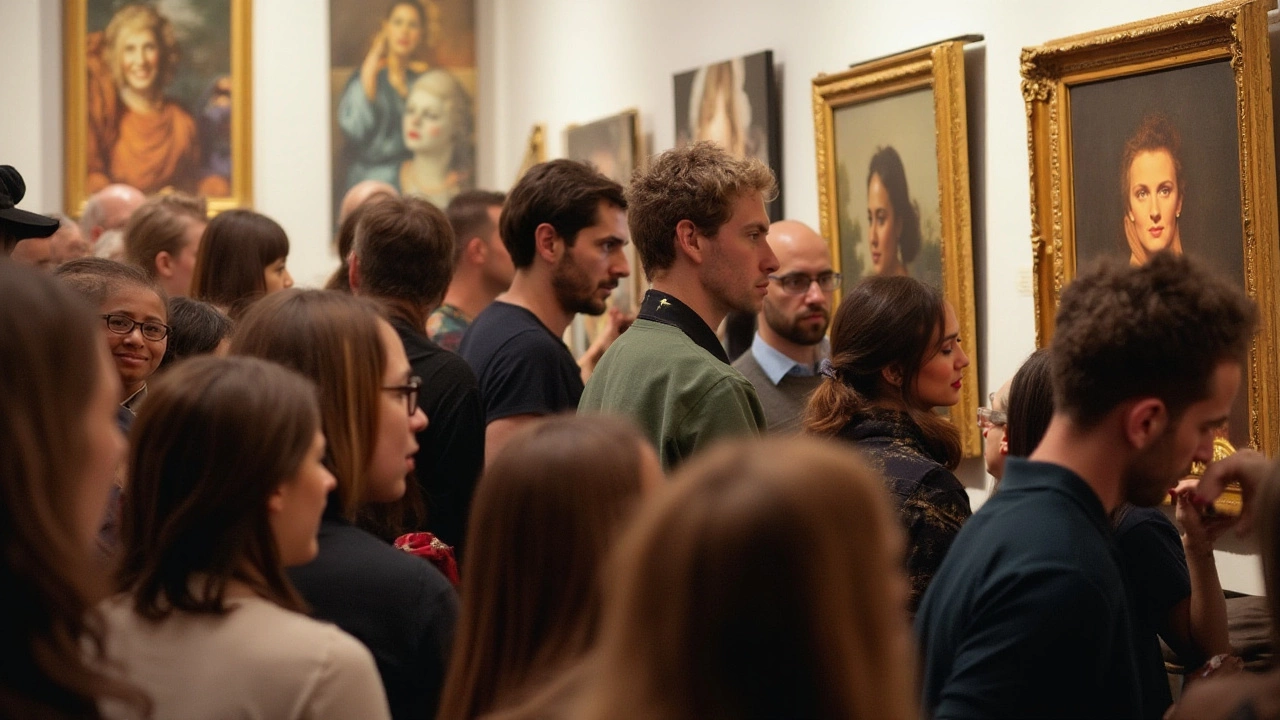
The Role of Color and Lighting
In the world of portrait painting, the use of color and lighting is not just ornamental but a powerful language in itself. Artists carefully select palettes to invoke mood, bring focus, and evoke emotional resonance. In this realm, color theory becomes a whispering guide that informs decisions; from the warm inviting hues of a vivid sunset to the cold, stark monotones that whisper solitude. These choices can accentuate the character’s reality or hint at an underlying story untold by their expression alone.
A pivotal component in this artistic language is lighting. The play of shadows and highlights is more than a technique to suggest form; it is a theatrical presentation unto itself that dictates the rhythm of the narrative. Take for example Rembrandt's masterful use of chiaroscuro, a dramatic contrast between light and dark, providing depth to the subject's features and drawing the viewer's eye to specific focal points. Light can reveal and obscure simultaneously, granting the artist the power to control the viewer's journey through the portrait.
Consider the delightful paradox in how light is interpreted on canvas—it can be solid, vivid, and tangible or soft, distant, and surreal—each interpretation serving a distinct purpose. Lighting sets the tone, much in the way a director uses lighting to define a scene in a movie. In portraiture, it helps define the personality of the subject, introducing viewers to these individuals in a predefined atmosphere. A gentle glow might reveal a tender, dreamlike quality, while harsh contrasts can underscore the stoic resolve etched into a subject's expression.
The master portraits we admire often utilize a strategic color scheme to highlight attributes of the sitter. Cool shades might delineate a sense of introspection or melancholy, whereas warmer tones could express vitality or warmth. Leonardo da Vinci’s Mona Lisa is a haunting example—a harmony of sfumato technique creating a smoky transition between colors that still captivates onlookers after half a millennium. This meticulous blending leaves room for mystery, inviting viewers into a conversation with the long-gone muse. Color works hand in hand with texture here, each brushstroke laden with storytelling potential.
"Color is a power which directly influences the soul," remarked artist Wassily Kandinsky, whose insights into color have informed generations of artists since. Indeed, in a portrait, the choice of color can be as much about eliciting an emotional response as capturing the visual accuracy of a subject.Moreover, both lighting and color create a visual hierarchy that lets artists manipulate how attention is distributed across the painting. A bright splash of color or a well-lit area serves as a beacon, guiding viewers through a curated visual path. The harmonious balance between these elements transforms portraits from visual documents into intricate emotional tapestries that engage and provoke.
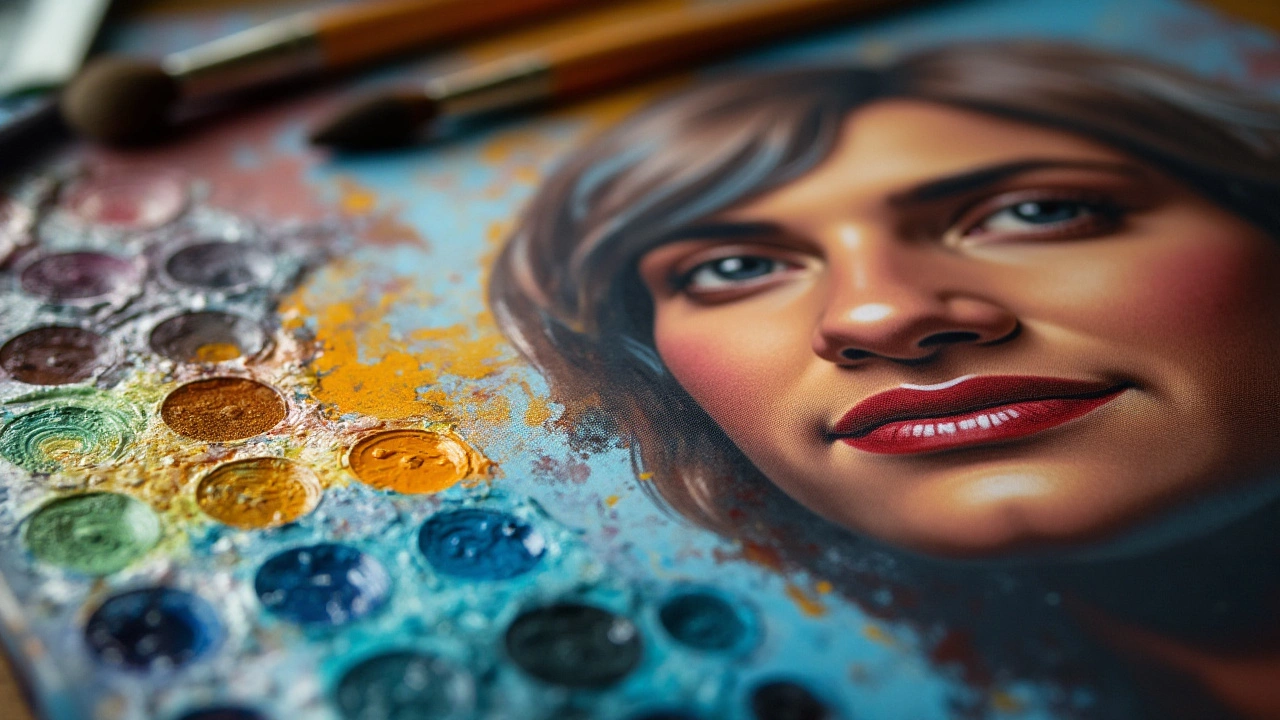
Expressing Emotion and Personality
At the heart of any remarkable portrait painting is its ability to convey emotion and personality, providing a visual echo of the sitter’s innermost essence. The nuance of a slight smile, the glint in an eye, or the tension in a seated posture—all these elements coalesce to express what lies beneath the surface. Artists often play the dual role of detective and storyteller, digging past the mundane to capture fleeting moments that define a person’s character. This dance between the painter and the painted results in portraits that are less about direct likeness and more about the spirit they capture.
To delve deeper into the artistry of expression, it helps to consider how renowned artists approach their work. Take Leonardo da Vinci’s celebrated Mona Lisa, or Johannes Vermeer’s Girl with a Pearl Earring. These iconic works bridge centuries, yet they remain touchstones in discussions of emotional visualization. Leonardo, in particular, mastered “sfumato”, a technique of softening transitions between colors, lending Mona Lisa an enigmatic and lifelike quality. This not only highlights technical acumen but demonstrates how subtlety can weave complex emotions into a seemingly simple image.
Modern approaches continue to innovate on this tradition, with artists experimenting with ever-evolving techniques and materials. Evocative use of color, bold or muted, guides the viewer’s emotional response, a strategic element that continues to be vital in art appreciation. The energy of a vibrant background or the stark simplicity of a monochrome palette may either compete with or complement the subject. Each choice leads to a different inference about personality and mood, influencing how deeply a viewer connects with the piece.
Understanding such nuances can enrich one’s experience when analyzing a portrait. It’s said by Vincent van Gogh,
"I want to touch people with my art. I want them to say 'he feels deeply, he feels tenderly.'"Van Gogh’s words reflect the spectrum of emotions—from love to sadness—that artists strive to encapsulate. Recognizing the emotional threads spun throughout a painting not only offers insight into the sitter’s psyche but also reveals the artist’s intent and technique.
For those looking to explore these depths, the journey begins with patience and observation. Note the tension in strokes or the serenity in a gaze. Does the use of shadow suggest warmth or mystery? Such questions bridge the gap between mere observation and true critique, drawing a fuller picture of what makes portrait painting not only an art form but a medium of personal connection. Whether in the hallowed halls of a museum or in the cozy charm of a private collection, the emotions captured in these paintings tell stories that transcend the simple canvas they occupy.
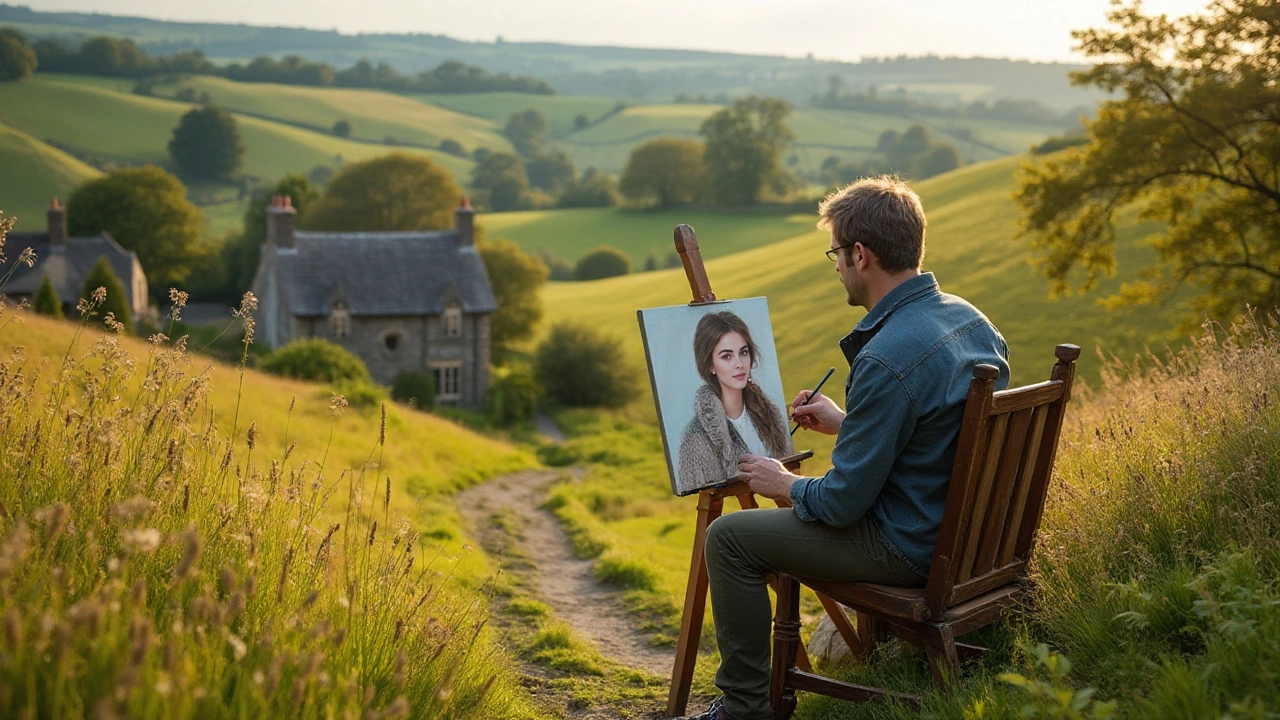
Recognizing Technical Skill and Style
The ability to discern technical skill and personal style in portrait painting requires a keen eye and an appreciation for artisanal minutiae. Skilled artists seamlessly combine precision with their unique approach, which lends each portrait its distinctive charm. Far beyond mere ability, technical skill in art refers to an adept understanding of anatomy, proportion, and the play of light and shadow on the human form. These technical aspects create realism and depth, drawing in viewers and compelling them to take a closer look.
A technically skilled artist must be able to transition from the soft, velvety texture of skin to the intricate detailing of individual strands of hair with ease, ensuring that each stroke contributes to the overall harmony of the work. Such intricacies might include accurate reflections in the eyes or the delicate play of light on lips, adding literal and figurative layers to the subject’s gaze. Artists often infuse their works with idiosyncratic touches, leaving their inimitable mark through specific brushstrokes or color palettes, symbolizing their signature style.
The unique style of an artist manifests through their choice of composition, how they frame their subject, and the mood they choose to convey. This choice is where creativity takes precedence, and personal expression is paramount. Consider the artistry of John Singer Sargent, celebrated for his ability to capture poses that seemed both spontaneous and meticulously composed. His deft use of light often left parts of his portraits bathed in mesmerizing chiaroscuro, shadows cutting through light, adding drama to his serene subjects. As you admire such paintings, understanding the balance of technical skill with artistic style is paramount to truly appreciating these masterworks. It's these fine details, from the careful blending of colors to the calculated disruptions of lines, that reveal the artist's hand and intent.
"What lives in the soul of a portrait is the subtle blending of real human emotion with masterly precision," noted art historian Kenneth Clark. This observation underscores the delicate marriage between method and emotion, a combination seen in iconic works that continue to resonate through time.
Another fascinating dimension of technical prowess can be seen in the gentle balancing act between warmth and coolness in skin tones, brilliantly demonstrated by painters like Rembrandt. His mastery in capturing flesh effortlessly reflects the vibrancy of life with a touch of light that dances with the dark shadows of mystery. Recognizing technical skill also involves noting how artists address realism or choose to diverge from it, creating abstract versions that reflect more on emotional truth than physical accuracy. Such versatility in style and skill demonstrates the profound depth of portrait painting, transforming it from mere picture to a symphonic portrayal of existence.
Art enthusiasts analyzing these aspects are encouraged to immerse themselves in the intricacies of brushwork similarly to how musicians study sheet music. The knowledge that lies between recognizing the skill and style of great artists allows one to participate in the continuing conversation that each portrait extends, rendering art appreciation an enriching experience.
